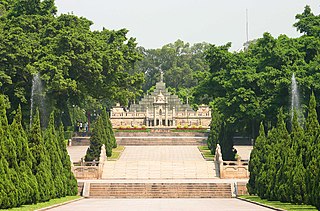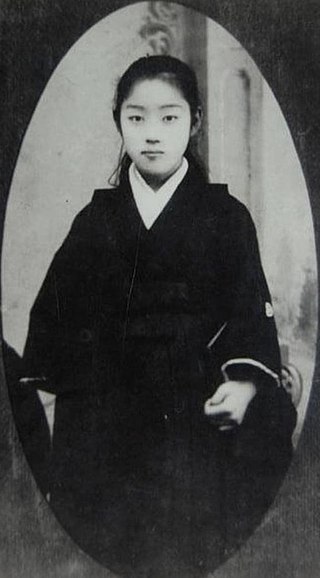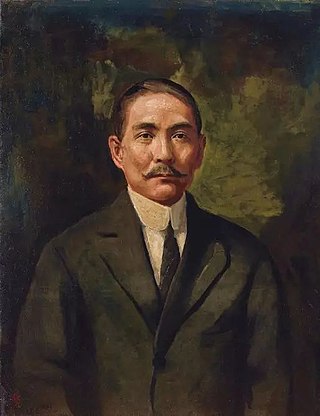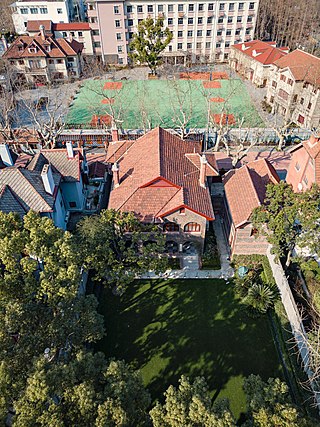
The Republic of China Armed Forces, commonly known as the Taiwanese Armed Forces, are the armed forces of Taiwan. They consist of the Army, Navy, Air Force and Military Police Force. The military is under the civilian control of the Ministry of National Defense, a cabinet-level agency overseen by the Legislative Yuan.

Sun Yat-sen was a Chinese revolutionary statesman, physician, and political philosopher who served as the first provisional president of the Republic of China and the first leader of the Kuomintang. He is called the "Father of the Nation" in the present-day Republic of China (Taiwan) and the "Forerunner of the Revolution" in the People's Republic of China for his instrumental role in the overthrow of the Qing dynasty during the 1911 Revolution. Sun is unique among 20th-century Chinese leaders for being widely revered by both the Communist Party in Mainland China and the Nationalist Party in Taiwan.

{{for|the national day that is celebrated in Taiwan|National Day of ROC}

The flag of the Republic of China, commonly called the flag of Taiwan, consists of a red field with a blue canton bearing a white disk surrounded by twelve triangles; said symbols symbolize the sun and rays of light emanating from it, respectively.

The Tongmenghui of China was a secret society and underground resistance movement founded by Sun Yat-sen, Song Jiaoren, and others in Tokyo, Empire of Japan, on 20 August 1905, with the goal of overthrowing China's Qing dynasty. It was formed from the merger of multiple late-Qing dynasty Chinese revolutionary groups.

The 1911 Revolution, also known as the Xinhai Revolution or Hsinhai Revolution, ended China's last imperial dynasty, the Manchu-led Qing dynasty, and led to the establishment of the Republic of China. The revolution was the culmination of a decade of agitation, revolts, and uprisings. Its success marked the collapse of the Chinese monarchy, the end of 2,132 years of imperial rule in China and 276 years of the Qing dynasty, and the beginning of China's early republican era.
The New Taiwan dollar is the official currency of the Republic of China (Taiwan). The New Taiwan dollar has been the currency of the island of Taiwan since 1949, when it replaced the old Taiwan dollar, at a rate of 40,000 old dollars per one new dollar. The basic unit of the New Taiwan dollar is called a yuan (圓) and is subdivided into ten chiao (角), and into 100 fen (分) or cents, although in practice both chiao and fen are never actually used.

The Taipei Economic and Cultural Representative Office (TECRO), also known as Taipei Economic and Cultural Office (TECO), Taipei Representative Office (TRO) or Taipei Mission, is an alternative diplomatic institution serving as a de facto embassy or a consulate of the Republic of China to exercise the foreign affairs and consular services in specific countries which have established formal diplomatic relations with the People's Republic of China. As the PRC denies the legitimacy of the ROC as a sovereign state and claims the ROC-controlled territories as an integral part of its China. An exclusive mandate namely One-China policy, mandates any country that wishes to establish a diplomatic relationship with the PRC must first sever any formal relationship with the ROC. According to The Fletcher Forum of World Affairs, "non-recognition of the Taiwanese government is a prerequisite for conducting formal diplomatic relations with the PRC—in effect forcing other governments to choose between Beijing and Taipei." As a result, these countries only allow the ROC to establish representative offices instead of a fully-fledged embassy or consulate for the purpose of conducting practical bilateral relations without granting full diplomatic recognition.

The Republic of China calendar, often shortened to the ROC calendar or the Minguo calendar, is a calendar used in Taiwan, Penghu, Kinmen, and Matsu. The calendar uses 1912, the year of the establishment of the Republic of China (ROC) in Nanjing, as the first year.

The Second Guangzhou (Canton) Uprising, known in Chinese as the Yellow Flower Mound Uprising or the Guangzhou Xinhai Uprising, was a failed uprising took place in China led by Huang Xing and his fellow revolutionaries against the Qing dynasty in Canton (Guangzhou). It is honored in Guangzhou's Yellow Flower Mound or Huanghuagang Park.

Taiwanese nationality law details the conditions in which a person is a national of the Republic of China (Taiwan). The Nationality Act is based on the principle of jus sanguinis, children born to at least one Taiwanese parent are automatically nationals at birth. Foreign nationals with permanent residency in Taiwan may naturalize after continuously living in the country for at least five (5) years. Certain foreign immediate family members of Taiwanese nationals may naturalize after continuously living in the country for at least three (3) years.

The national flag of the People's Republic of China, also known as the Five-star Red Flag, is a Chinese red field with five golden stars charged at the canton. The design features one large star, with four smaller stars in an arc set off towards the fly. It has been the national flag of China since the foundation of the People's Republic of China on 1 October 1949.

Kaoru Otsuki was a Japanese woman known for being the second wife of Sun Yat-sen, the founder and first president of the Republic of China.

The Provisional Government of the Republic of China was a provisional government established during the Xinhai Revolution by the revolutionaries in 1912. After the success of the Wuchang Uprising, revolutionary provincial assembly representatives held a conference in the district of Wuchang, China, which framed the organizational outline of the Provisional Government.

The Republic of China (ROC), or simply China, was a sovereign state based in Mainland China from 1912 to 1949 prior to its move to Taiwan. It was first established on 1 January 1912, after being proclaimed in the 1911 Revolution against the Manchu-led Qing dynasty, and lasted until 7 December 1949, after its ruling party Kuomintang (KMT) was defeated by the Chinese Communist Party (CCP) at the de facto end of the Chinese Civil War, which resulted in a retreat of its central government to Taiwan, a territory which it took control of from the Empire of Japan in October 1945 after its surrender in World War II. The CCP-led People's Republic of China (PRC) then took over the governance of Mainland China with its capital in Beijing upon its establishment on 1 October 1949, while the ROC is now based on the island of Taiwan with its capital Taipei, where it retains actual rule over the Taiwan Area with the political status of Taiwan remaining in dispute to this day.

This is a family tree of Sun Yat-sen, the first provisional president of the Republic of China. The following chart uses Mandarin pinyin romanization. Some members may have been referred to in the Cantonese, Hakka, Hokkien at one time or another. Pre-marriage surnames are used.

The Former Residence of Sun Yat-sen, located at 7 Xiangshan Road in the French Concession area of Shanghai, China, near Fuxing Park to the east, was the residence of the Chinese revolutionary Dr. Sun Yat-sen (1866–1925)

Seoul Overseas Chinese High School or Hanseong Chinese Middle and High School is a Republic of China (Taiwan)-oriented Chinese international junior and senior high school in Seodaemun-gu, Seoul, South Korea. It follows the curriculum of the ROC, and accordingly uses textbooks from Taiwan.

The pro-Republic of China camp, or the pro-Kuomintang camp (親國民黨派), is a political alignment in Hong Kong. It generally pledges allegiance to the Republic of China (ROC) in Taiwan and the Kuomintang.




















